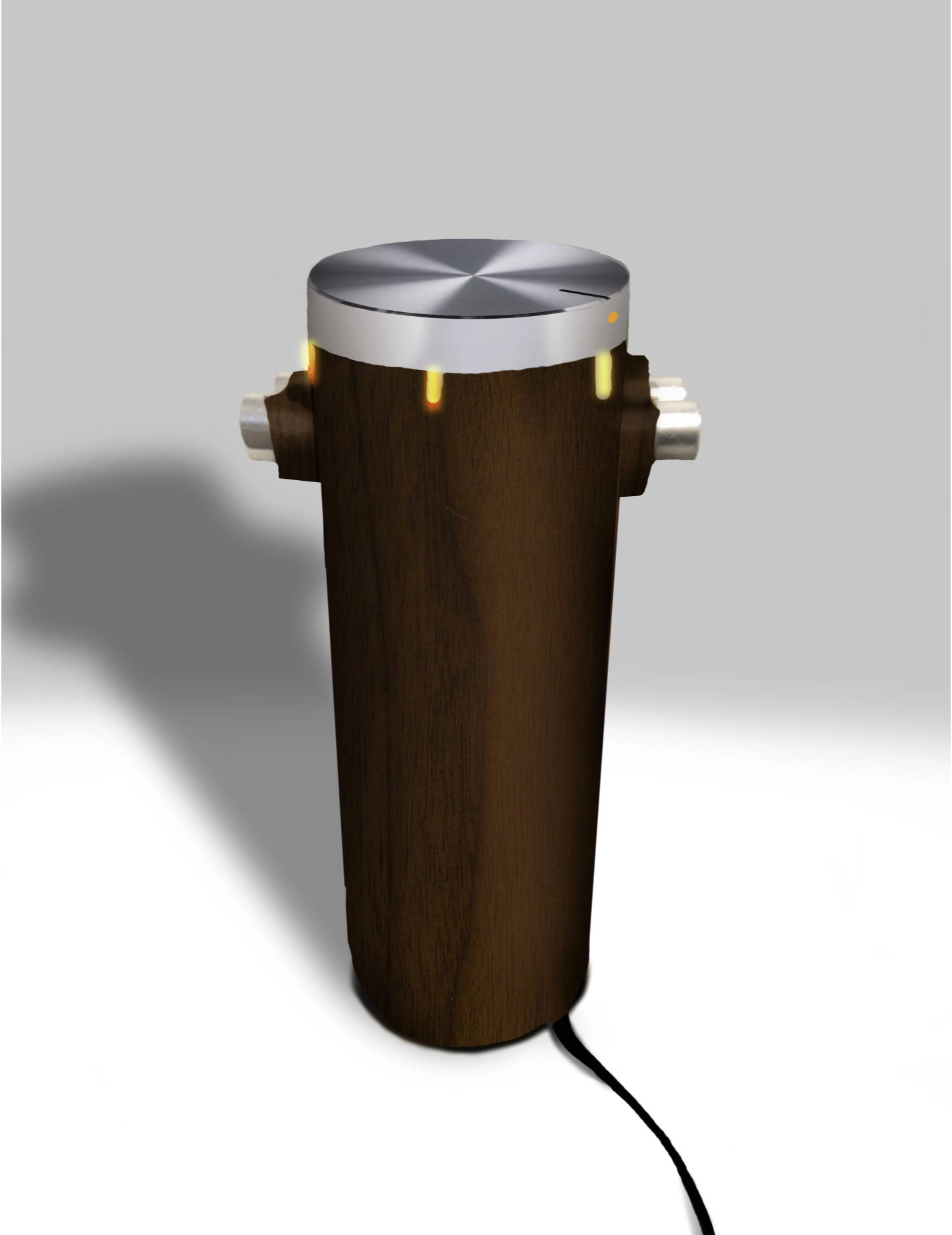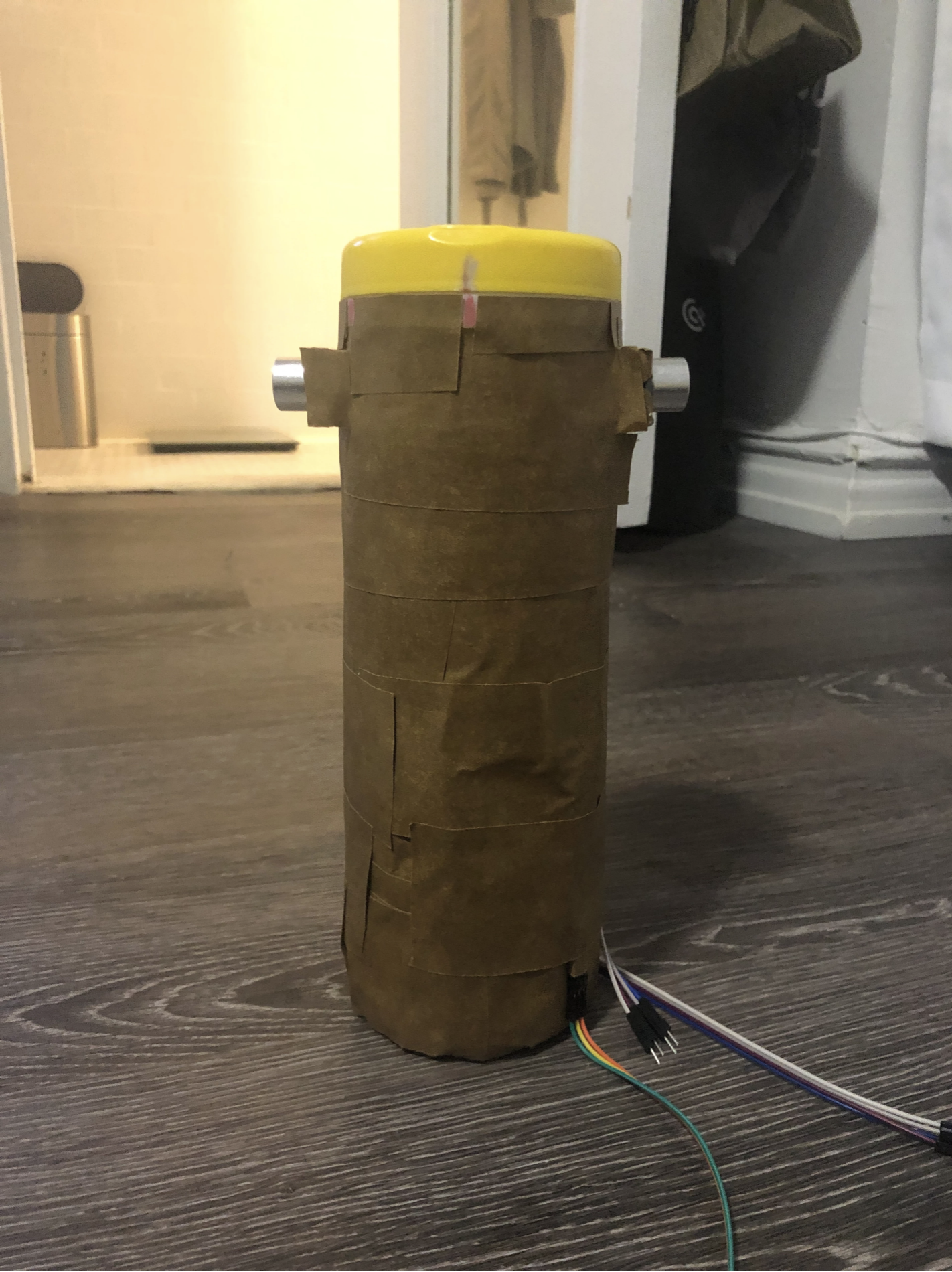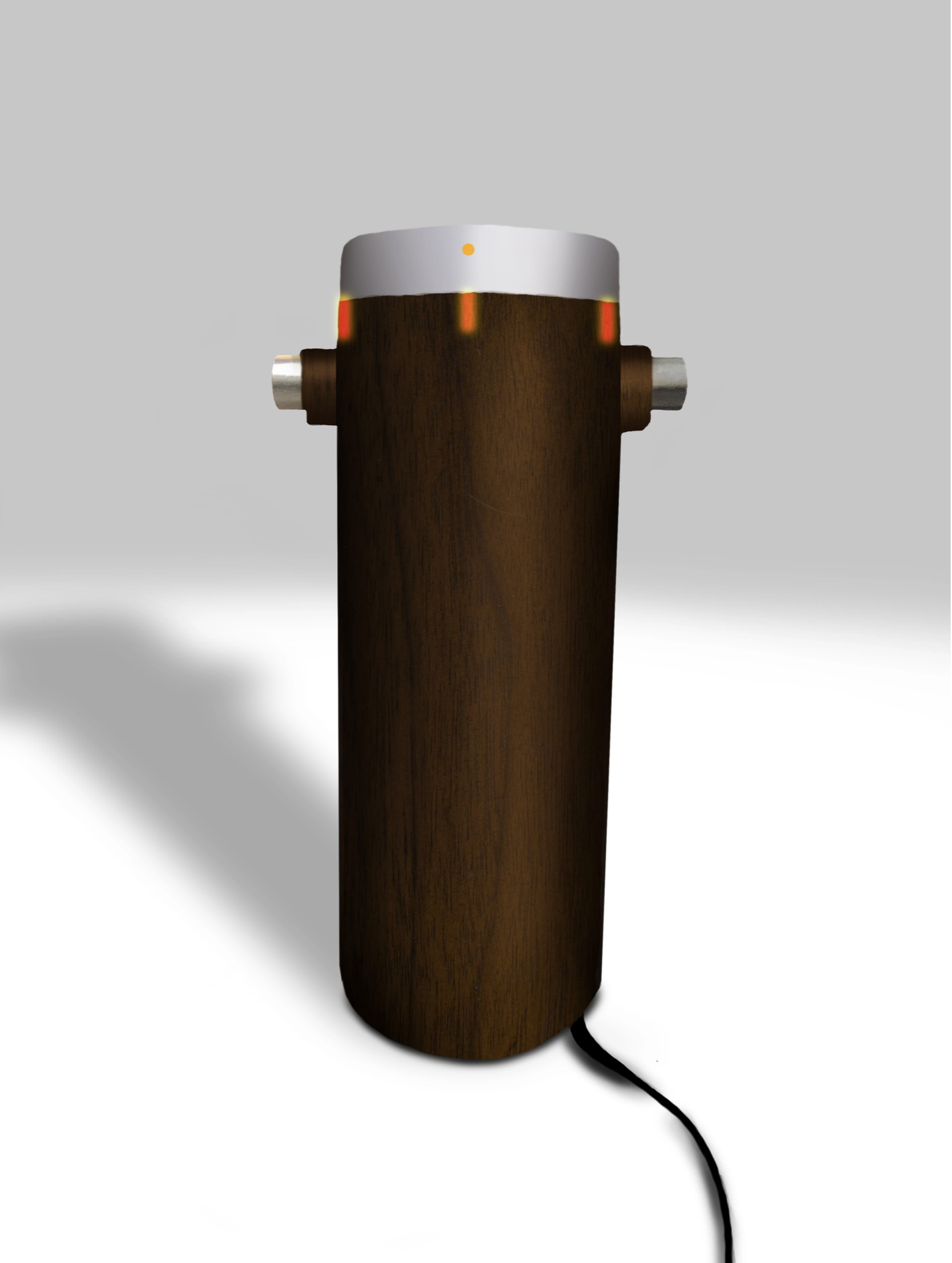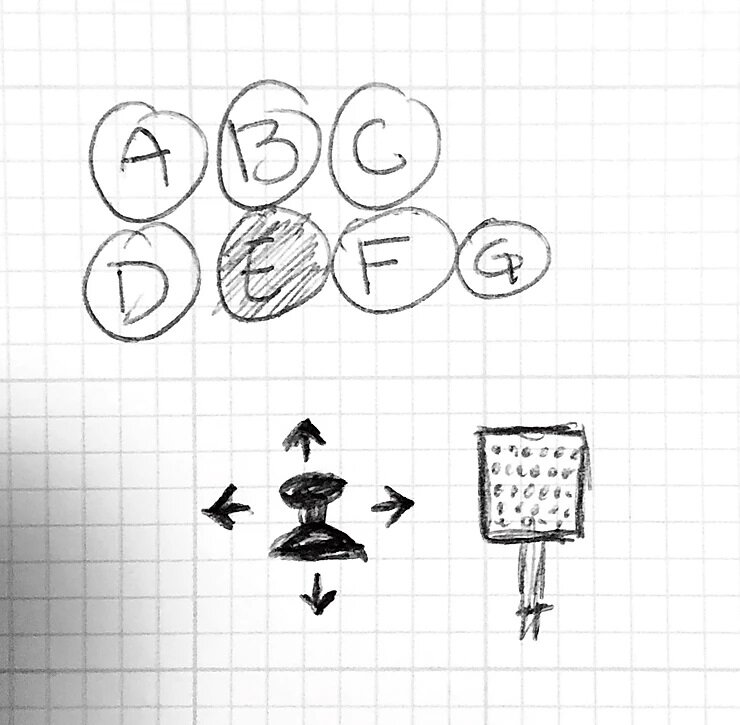Brief: Make a device to control playback of synthesized or pre-recorded music using MIDI.
Your device should support the following features:
start and stop the playing of a note
play multiple notes simultaneously
sustain a note
pitch-bend a note
Partner: Helen Zegarra
CONCEPT #1
Using several ultrasonic sensors, create a kind of "invisible" instrument controlled by your hand position. The sensors would play different notes depending on how close or far away you place your hands. We would map distance ranges for each note and having several sensors would permit the user from playing several notes at once. If the sensor does not receive any object it would stop playing anything. We're playing with the idea of adding a pedal to control volume.
CONCEPT #2
Using a joystick the user would scroll through notes or popular groupings of notes and play them using a pressure sensor. Depending on the amount of pressure on the sensor you would be able to regulate the volume.
PROJECT INITIAL CONCEPT
We're basing our concept on a Theremin but ideally we'd like it to have some automatized aspects so people that don't really know much about music can play melodies that have a full sound and not just a couple of notes.
The way we're thinking about it working is having one ultrasonic sensor for note changing and another for amplitude. We'd like to find a way to sustain a particular note (perhaps while a button is held down) and another way to do scale changes (perhaps with a potentiometer) for the final deliverable.
STRUCTURE
This was our initial structure for the prototype but we weren’t too sure of it, we wanted something more compact.
OUR CIRCUIT
This was our initial structure for the prototype but we weren’t too sure of it, we wanted something more compact.
OUR QUESTIONS
* How do we send a midiMessage that is able to play sounds in different scales in something other than piano?
* How do we add a byte to the message that indicates a change in the pitch?
* How do we sustain the note by just mapping the sensor?
* Is there a way to pre-configure all the scales, using the same logic?
* Will be necessary to add a smooth transition when mapping the sensor?
STRUCTURE PROTOTYPE
This potentiometer doesn't have the smoothest feel in the world but having a big "knob" on it for some reason offsets that and makes it feel gentler than it is. We're thinking to use the potentiometer to change the scales so it would be less frequently used in one particular song.
We're also considering changing the design of the instrument to a vertical interaction that might feel more natural or perhaps angle the sensors in a triangle composition so it's more comfortable. This way it might be more compact and not need the two little antennas on each side for the sensors.
FINAL SONG
It has been a really cool journey with this project. Helen and I were a little concerned that our nonexistent knowledge of music would be really detrimental to our project's quality. However we feel we've learned a lot and are fairly proud of what we've accomplished.
OUR PROJECT
We wanted to make an instrument that worked by sensing distance. We used a Theremin as a concept base. Because we aren't musicians we wanted to try to make some presets to make playing easier regardless of your level. We made several iterations with different interactions and designs.
The way it works up until now is: one sensor plays notes in C4 diatonic scale and the other plays them in C5. The potentiometer regulates and changes the scales. We tried using the potentiometer to change octaves with 12 note series like a piano as well so this control would depend on the instrument selected on the synth since some instruments have a wider range of notes than others.
OUR INSTRUMENT
We redesigned the instrument to make it more compact and perhaps a more elegant implementation. Our execution right now is not the ideal since some of the materials weren't readily available to us. Ideally all our components would fit inside the cylinder with only the power cable coming out.

















